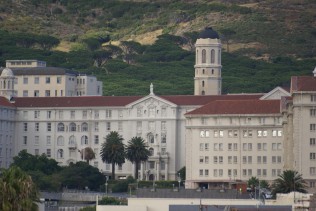Despite an overburdened and under-resourced public healthcare system, South Africa is fast becoming a top medical tourism destination in the private care sector because of the professionalism and polish of its private treatment packages, new research reveals.
The Southern African Migration Project, an international network of organizations promoting awareness of migration-development linkages in the Southern African Development Community (SADC), has identified three major hubs—Thailand, India and Singapore—and three minor hubs—Costa Rica, Hungary and South Africa—for north-south medical tourists.
While India is the cheapest of all the hubs, with prices for surgical procedures averaging only a fifth of those in the United States, Thailand has the best elective procedures such as routine check-ups and cosmetic surgery, and Singapore has the best skilled practitioners and state-of-the-art technology.
While medical tourism packages consist of much the same in all tourism hubs—a consultation and surgery, a personal physical therapist and personal assistant during recovery in a spa, and a safari tour—South Africa’s professionalism and polish is by far the best, says Jonathan Crush, director of the Southern African Research Centre at Queen’s University, Canada.

Nevertheless, the project’s research shows that the “surgeon and safari” experience is only a small segment of South Africa’s industry, and that 85 percent of the medical tourism is from other African countries. Medical travelers from East and West Africa are generally middle-class Africans seeking specialist diagnosis and treatment, who spend more time in South Africa than any other traveler (including those from the northern hemisphere), while those from neighboring countries make up more than 80 percent of the total medical travel flow to South Africa.
The number of medical travelers increased from 327,000 in 2006 to more than 500,000 in 2009 but dropped again to under 400,000 in 2010. The proportion of travelers who came to South Africa for medical reasons from 2006 through 2010 is well below those who came to shop, on vacation, to visit family and friends, and on business. The length of stay of all tourists in 2010 was around 8.5 nights while medical travelers stayed for around 5.6 nights (up from 4.5 nights in 2007) on average.
The global north generated 281,000 medical travelers over this period while the global south was the source of more than two million. Regionally, Asia and Australia were the least important source of medical travelers at 29,000 (only 2.5 percent of total visitors), and Africa the most important at 2,196,000.
In an article on About.com, Africa Travel specialist Anouk Zijlma notes that it’s “ironic that countries that attract medical tourists are often unable to meet even the most basic medical needs for their own populations. This is not an either/or issue, but it’s worth thinking about and perhaps shopping around for a clinic that donates some of its profits to providing medical care for those who can’t afford it at all.”
Read Ethical Traveler's Reprint Policy.
